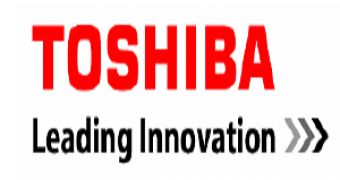Sony has just announced that it will sell its microprocessor production facilities in western Japan to Toshiba in exchange of $835 million. The purchase agreement is one of the final steps the companies are taking in order to consolidate their business partnership.
The inventory located at the chip production facility will especially be used by the Toshiba-Sony newly formed joint venture in order to produce the ultra-high performance "Cell Broadband Engine" processors, as well as RSX graphic chips. Both products are among Sony's most vital intellectual assets and are successfully used in Sony's PlayStation 3 game console. The joint venture will also produce a broad range of semiconductors, yet it will mainly focus on Cell and RSX chips.
The venture does not have a name yet and it will be established on April the 1st. It will be 60 percent owned by Toshiba, and the remainder will be split equally between Sony and Sony Computer Entertainment (SCEI). The chips will be manufactured at the Nagasaki Technology Centre, which is currently in possession of Sony Semiconductor Kyushu Corporation (SCK). However, the 300mm wafer line installed in Fab2 in the Nagasaki facility will be bought by Toshiba for $800 million.
The news follows Toshiba's announcement yesterday, that announced that it has acknowledged the death of the HD-DVD format. Sony is also building two new fabs in Japan, that will produce both semiconductors and advanced generations of NAND flash memory. Sony will allocate 50 percent of the production capacity in the NAND flash plant to another new Toshiba alliance with SanDisk.
The manufacturing process will start at the 65-nanometer production node, but the joint venture will then switch to the 45-nanometer process mass production. The transition will be possible thanks to Toshiba's system LSI manufacturing operation in Oita. The joint venture won't stop here, as both Toshiba ans Sony will continue to improve the production node.

 14 DAY TRIAL //
14 DAY TRIAL //